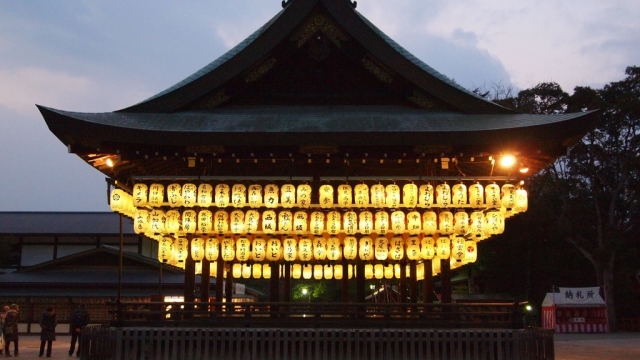
In the heart of Japan, where vibrant forests and serene landscapes meet, the age-old whispers of the ancients beckon us to explore the enchanting world of Shinto shrines. These sacred spaces, steeped in mystique and tradition, serve as a bridge between the earthly realm and the divine. Each shrine, adorned with delicate architecture and surrounded by nature’s beauty, tells a story of faith, community, and connection to the past.
As we wander through the tranquil paths leading to these hallowed sites, we are invited to pause and reflect on the values that underpin Shintoism. The rhythmic sound of the wind through the trees and the gentle rustle of leaves create an atmosphere of peace and reverence. Shinto shrines are not only places of worship; they are sanctuaries where the spiritual and natural worlds intertwine, inviting visitors to experience the beauty of Japan’s heritage and the profound respect for nature that defines this ancient belief system.
The Origins of Shinto Shrines
Shinto shrines in Japan have a rich and complex history that intertwines with the spiritual and cultural development of the nation. The origins of Shinto can be traced back to ancient animistic beliefs that revolved around the worship of kami, or spirits, which are found in natural elements such as mountains, rivers, and trees. These early beliefs laid the foundation for what would eventually evolve into the structured practice known as Shinto. As communities grew, so did the need for designated places of worship where people could honor these kami.
The first Shinto shrines were simple structures, often consisting of natural materials and situated in sacred locations believed to be inhabited by kami. These early shrines were not man-made in the traditional sense; they utilized natural features and altered landscapes to create a spiritual environment. Over time, as Shinto gained prominence, these sacred spaces transformed into more formalized structures, reflecting the architectural styles and artistic expressions of various historical periods in Japan.
With the establishment of the imperial court and the codification of Shinto practices during the Nara period, the development of Shinto shrines became more systematic. The shrines began to be recognized as essential components of societal identity and culture. Significant shrines, like Ise Jingu, emerged as central pilgrimage sites, further solidifying the role of Shinto shrines in Japanese life. This evolution laid the groundwork for the myriad of shrines seen across the country today, each carrying its own unique charm and cultural significance.
Architectural Beauty and Symbolism
The architectural design of Shinto shrines in Japan is a harmonious blend of simplicity and elegance, reflecting the deep connection between nature and spirituality. Constructed primarily from natural materials like wood and stone, these structures often embody a rustic charm that resonates with the surrounding environment. The use of traditional techniques passed down through generations creates an authentic aesthetic, while the incorporation of elements like thatched roofs and wooden posts adds a timeless quality that endears them to both locals and visitors alike.
Symbolism plays a vital role in the design of Shinto shrines in Japan. The torii gate, which marks the entrance to a shrine, serves as a powerful symbol of transition from the mundane to the sacred. Often painted in bright vermillion, the torii stands out against the lush greenery, inviting worshippers to step into a sacred space. Inside, the shrine itself typically features an inner sanctuary, or honden, which houses the kami, or spirit, that the shrine is dedicated to. This sacred area is often left in its purest form, emphasizing the importance of natural beauty and simplicity in Shinto belief.
Every aspect of the layout and decoration within Shinto shrines in Japan is intentional, representing various spiritual concepts and regional traditions. Different shrines may showcase unique elements such as stone lanterns, water basins, and sacred trees, each with its own significance. Furthermore, seasonal festivals and rituals enhance the shrines’ roles as community centers where traditions are kept alive. The architectural beauty and deep symbolism of these shrines reflect the essence of Shinto beliefs, offering both spiritual solace and a sense of belonging to the Japanese people.
Rituals and Practices at Shrines
Visiting a Shinto shrine is an immersive experience that invites participation in various centuries-old rituals. One of the most common practices is the ablution at the chozuya, or purification fountain, where visitors wash their hands and mouth to purify themselves before approaching the sacred space. This act is symbolic, preparing the mind and body for a deeper connection with the kami, or spirits, that inhabit the shrine. Upon entering, worshippers usually bow twice, clap their hands twice, and bow again as a sign of respect and acknowledgment to the deities.
Another important ritual is the offering of ema, wooden plaques on which visitors write their wishes or prayers. These are then hung in designated areas within the shrine grounds. This practice serves as both a personal expression of hope and a means of connecting with the spiritual realm. In many shrines, visitors also have the opportunity to participate in the custom of omikuji, drawing lots to receive a fortune that reveals one’s luck for the year. This interactive element adds a layer of engagement, allowing individuals to reflect on their lives and aspirations.
Seasonal festivals, known as matsuri, are vibrant events at Shinto shrines that celebrate various kami. These festivities often involve traditional music, dance, and offerings, drawing locals and tourists alike for a shared cultural experience. During these occasions, the community gathers to honor the kami with prayers, food, and performances, reinforcing the bond between the people and their spiritual beliefs. Each shrine has its unique customs and celebrations, making every visit a chance to witness the richness of Shinto traditions and the deep-rooted connection to nature and history.
Cultural Significance in Modern Japan
https://sumai-net.jp/ninki-shrine-ranking/
Shinto shrines in Japan hold profound cultural significance that extends far beyond their architectural beauty. They serve as vital spaces for spiritual connection, where individuals engage with the Shinto belief system rooted in the reverence for kami, or spirits. Many Japanese people visit shrines for milestones such as births, weddings, and festivals, making these sites central to personal and communal ceremonies. This ongoing practice highlights the enduring relevance of Shinto traditions in contemporary life, weaving a thread of spirituality through the fabric of modern society.
In addition to their spiritual roles, Shinto shrines contribute to the preservation of Japan’s cultural heritage. They are often nestled within lush natural settings, embodying the harmonious relationship between humanity and nature that Shinto emphasizes. Many shrines also host traditional arts, music, and dance, showcasing local customs and reinforcing community identity. As cities modernize, these shrines act as sanctuaries of history, where ancient practices can still be experienced amidst the rapid pace of change.
Furthermore, Shinto shrines attract millions of visitors each year, both domestic and international, making them key players in Japan’s tourism industry. This influx of visitors promotes a deeper understanding of Shinto beliefs and practices, contributing to cultural exchange and appreciation. By exploring these sacred spaces, people gain insight into the values and traditions that continue to shape Japan today, ensuring that the whispers of the ancients resonate within the hearts of all who come to visit.





